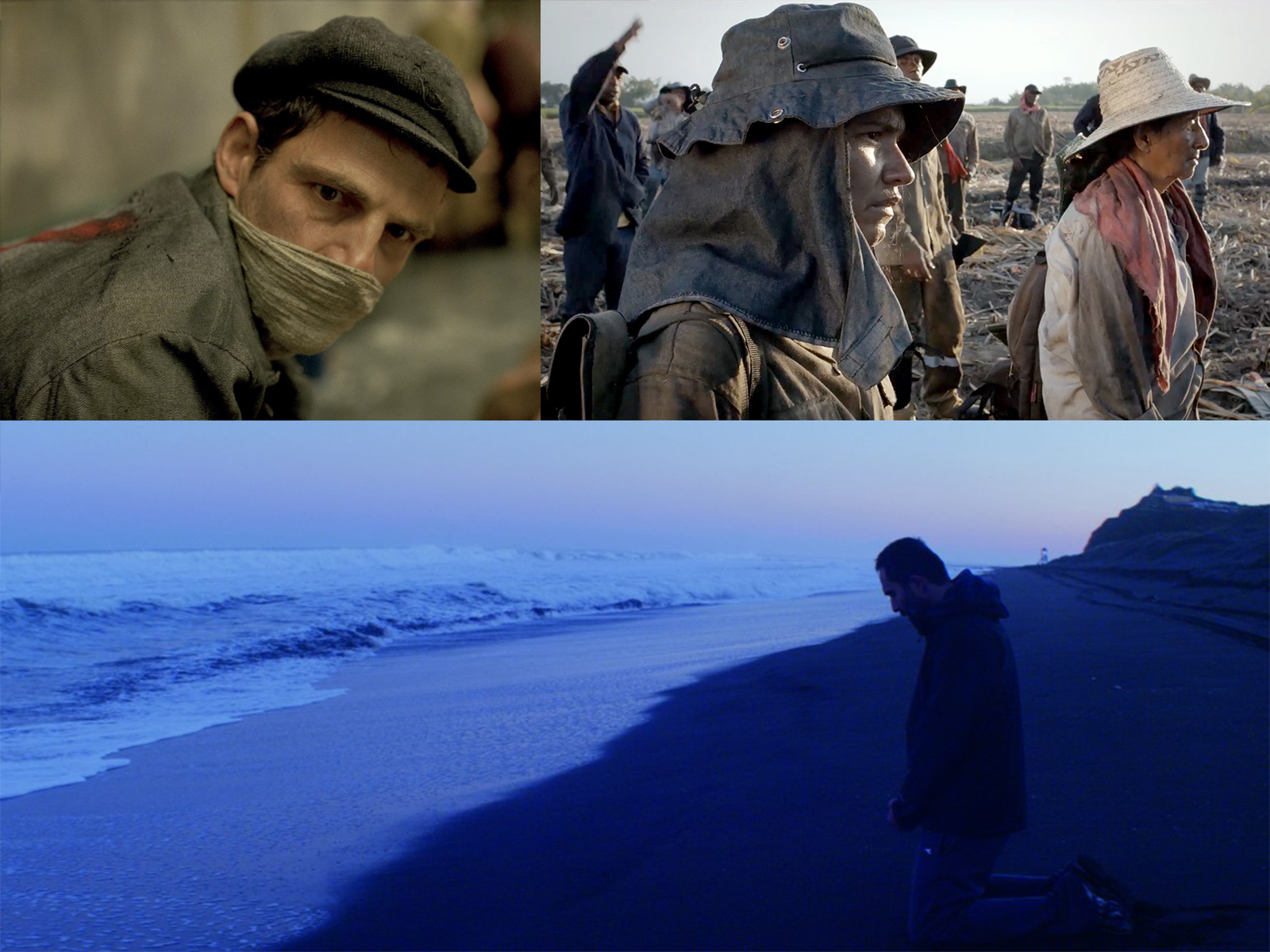AFI Fest Day Six: Harrowing tales of personal struggle come alive on screen

Day six at AFI Fest saw bleak films like “Son of Saul” (top left), “Land and Shade” (top right) and “The Club” (bottom) take center stage. (Sony Pictures Classics, Burning Blue and Music Box Films)
By Sebastian Torrelio
Nov. 11, 2015 4:55 p.m.
“Son of Saul” may be the most courageous project of this year’s AFI Fest from a production perspective. László Nemes, a first-time director, tackles a story set during the Holocaust, with a maddeningly encroaching camera and a deeply dark script.
There’s a reason that “Son of Saul” was chosen as Hungary’s entry for this year’s foreign language Oscar, and why it’s received best picture buzz. It encapsulates a terribly tragic premise and makes the audience endure as much as it can take before a soothing ending. “Son of Saul,” as with many films at the festival this year, doesn’t hold back with its bleak subject matter, which only serves to make it more impactful, if not more memorable.
Géza Röhrig plays the titular Saul, a prisoner at the Auschwitz-Birkenau concentration camp. He is a Sonderkommando, a group of prisoners who assist in destroying bodies from the German mass extermination. Amid the despair, he finds the body of a young boy that he begins claiming is his son, and takes it upon himself to give the child a proper Jewish burial. At the same time that his squad learns of their own impending deaths, Saul furiously searches for a rabbi while horrifying chaos reigns around him.
Nemes and cinematographer Mátyás Erdély frame the film almost entirely around Röhrig’s rushed movement, focusing on his tired but urgent eyes. Nemes doesn’t commit lightly to the tone either, filling most of the film’s background scenes with screaming and gunfire.
With a morally sophisticated plot about humans at their most animalistic, “Son of Saul” is devastating. The film is extremely hard to swallow, not because the violence is depicted graphically but instead because the film skirts around it, choosing to use it as an always present, haunting atmosphere.
If “Son of Saul” is bleak filmmaking at its most active, “Land and Shade” is bleak filmmaking at its most passive. When his son falls deeply ill, a father returns to his old sugarcane farming lands in Colombia where the family and way of life he left behind have fallen into decay. His relatives are constantly rained upon by the ash of local plantations, which has depreciated the land and turned much of it sullen and dry.
Winner of the Camera d’Or for best debut feature at this year’s Cannes Film Festival, César Augusto Acevedo’s “Land and Shade” is a masterpiece of visual framing and theatrical blocking. Every shot has a greater meaning to it, whether among the giant stocks of sugarcane or in the family’s morose, dimly lit household.
The cinematography expresses resolute themes of human emotions, while the film’s script sparsely scopes out how much of a struggle these individuals have to communicate and cope with their environment. “Land and Shade” is a calculated work, every detail finely worked out of its heartbreaking observances.
“Land and Shade” is hardly an interactive piece, though, creating great distance between what the audience may be understanding and how the characters interact.
The tone is very unlike many of AFI’s pieces of grim subject matter, including “The Club,” Chile’s submission for this year’s Oscar foreign language race. With a nuanced hand, director Pablo Larraín tells the story of a small household where several Catholic priests and a nun live together. They go about their daily routines of eating, praying and venturing around the seaside town without incident.
When a new priest arrives, accusations are brought up, and a dark history begins to unfold. Slowly, Larraín unravels the story behind the household, and what has led the priests to assemble here in the first place. “The Club” is a depressing take on the sins of the Catholic Church and the atrocities that everyday people can commit. But it’s also a personal parable, giving each character in the house a personality and background as to their wants and thoughts.
With a spirited energy and subversive ideas, “The Club” is entertaining, though one of the more complicated films from this year’s selections. None of the above films are to be taken lightly, either for their subject matter or their stark portrayals of life and death. That’s what makes them all the more harrowing as adventures of storytelling, and fantastic works of art to dive into – just leave hopeful emotions and expectations at the door before entering.
Compiled by Sebastian Torrelio, A&E senior staff.


